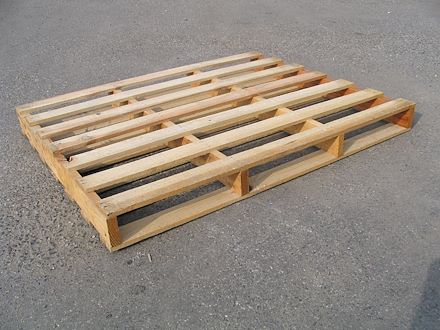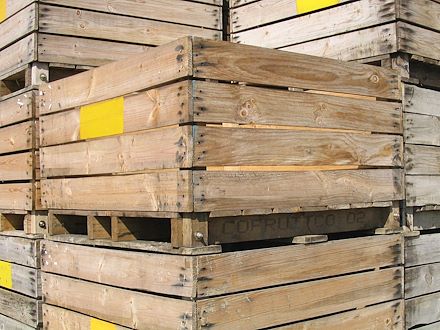
Standard pallets
Standard pallets meet most industrial requirements. Available for light, semi-heavy or heavy loads, they are either "one-way" (used only once) or "multi-rotation".
Standard pallets measure 80x120cm or 100x120cm and have two or four entrances. If the pallets are to be exported, they must be fumigated to ISPM15 standards in certain countries (USA, China, etc.).
Pallets EPAL

The Europe or EUR EPAL pallet, formerly known as the Euro pallet, is a four-way wooden pallet that meets the requirements of UIC leaflets 435-2-0 (for manufacture) and 435-4-OR (for repair) and the EPAL "Technical Regulations". It also meets AQF 335 Railway Quality Assurance standards. This quality charter has enabled the Europe pallet to become an essential part of the logistics chain for handling and transporting goods.
Measuring 1200 x 800 mm and weighing around 25 kg, an EPAL EUR pallet can support a dynamic load of between 1000 and 1400 kg. [MORE]
Palettes CP

Created in the early 90s by the VCI (Verband der Chemischer Industrie), CP pallets are dedicated to the chemical industry. Since then, their management has been entrusted to APME (Association of Plastics Manufacturers in Europe), which organises their distribution and collection on a European scale. The standard defines nine pallet models, from CP1 to CP9, which can be rotated several times.
CP pallets can be repaired one or more times if necessary. At the end of their life, like any other handling device, they are recycled or disposed of. CP pallets meet precise specifications in terms of wood quality, fastening of components, dimensional tolerances and marking.
Material pallet

The "cement" pallets defined by the concrete industries and also used by lime, plaster and plaster manufacturers are the most common, but there are many other types of pallet associated with building materials and derivatives. These include pallets for breeze blocks or cement, pallets for tiles, slates, plaster bricks, plasterboard, joinery and tiles.
Pallets boxes

The food and agriculture sectors in particular, but also the petrochemical industry, have specific requirements in terms of storage and handling. The pallet box, or palox, is designed to be robust and to protect the materials or products being transported.
Traditionally made of wood, the pallet box is made up of chamfered elements with sections similar to a heavy pallet, with the box generally bolted to the base. A horizontal belt can reinforce the assembly on certain models. The maximum load is 1500kg.